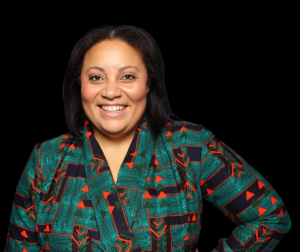Faith forward to end the HIV epidemic by 2030
Dec 14, 2024

HIV Cure Research Day
December 14
Written by Allison Mathews
HIV Cure Research Day, established on December 14, 2017, was born out of a deeply rooted commitment to addressing the HIV epidemic by fostering community ownership, trust, and awareness about cure research. The journey to this significant milestone began with an innovative research project aimed at leveraging crowdsourcing to engage community members in conversations about HIV cure research.
In the early days of this project, my team and I held focus group discussions and design sprint sessions with community members in Durham, North Carolina. These sessions sought to understand the community’s concerns, priorities, and hopes regarding HIV cure research. What emerged was a powerful narrative: Black and Brown communities demanded a cure that was not only effective but also affordable and accessible. They called for a collaborative process that centered community ownership and insisted on rebuilding trust between scientists and the communities historically marginalized and mistreated by scientific institutions.
Addressing Historical Mistrust and Promoting Community Ownership
The long legacy of exploitation in scientific research, from the Tuskegee Syphilis Study to unethical experiments on vulnerable populations, loomed large in these discussions. Community members highlighted the importance of building genuine trust by ensuring transparency, equity, and mutual respect between researchers and participants.
Beyond trust, they emphasized the need for community-centered solutions. Any efforts to find a cure for HIV, they argued, must include the voices and leadership of those most affected by the epidemic. This commitment to community-driven innovation became a cornerstone of our work.
Engaging Culture and Creativity
The community also inspired us to think outside the box about engagement strategies. They encouraged us to leverage popular culture, social media, Hip-hop, artists, local businesses, and community organizations to amplify the message of HIV cure research. This led to the creation of a dynamic and inclusive project title: 2BeatHIV. The name reflected both the urgency of beating the HIV epidemic and the collaborative spirit of our approach.
We launched our first crowdsourcing contest with a simple but profound question:
“What does HIV cure mean to you?”
Community members were invited to submit creative content—poems, videos, visual art, and more—that answered this prompt. A panel of judges, including scientists and community leaders, evaluated the submissions. The top three finalists were celebrated online and received prizes, highlighting their creativity and perspectives.
Expanding the Movement
The success of this initial contest inspired us to continue hosting crowdsourcing contests, developing educational materials, and organizing community events to raise awareness about HIV cure research. Our events didn’t just focus on cure science; they also emphasized the importance of HIV testing, PrEP (preexposure prophylaxis), and treatment to prevent transmission and improve health outcomes.
It was through this sustained community engagement that the idea for HIV Cure Research Day was born. The goal of the day was not just to educate but also to celebrate the progress in cure research and to honor the resilience of communities most affected by the epidemic.
What Still Needs to Be Done
While we’ve made significant strides, much work remains to be done. The journey toward ending the HIV epidemic requires confronting the persistent stigma surrounding HIV, which often prevents people from seeking testing, treatment, and participation in clinical trials. This is where trusted community voices, such as faith leaders, play a pivotal role.
Faith leaders are uniquely positioned to challenge stigma, given their influence and reach within communities. By addressing misconceptions about HIV from the pulpit and creating safe spaces for open dialogue, they can dismantle harmful narratives that fuel shame and discrimination. Moreover, they can advocate for diverse participation in clinical trials, ensuring that communities most impacted by HIV are represented in research and benefit equitably from its outcomes.
Ensuring Equitable Access
As we edge closer to a cure, we must prioritize equitable access to treatment once it becomes available. Faith leaders, alongside activists and community organizations, can help ensure that affordability and accessibility remain at the forefront of policy and implementation. They can also amplify calls for structural changes to address health disparities that have long been barriers to care in Black and Brown communities.
A Collective Mission
HIV Cure Research Day symbolizes hope, progress, and the power of collaboration. But its true success lies in our collective ability to maintain the momentum. Scientists, community members, faith leaders, policymakers, and advocates must continue working together to not only achieve a cure but also to ensure that it is a cure for everyone.
Through partnerships, advocacy, and unwavering commitment to equity, we can transform the vision of an HIV-free world into reality—one where no one is left behind. Faith, in all its forms, will be an essential part of guiding us there.
For more information on HIV cure research and how to get involved, visit www.hivcureresearchday.org.
Sign up to receive our newsletter.